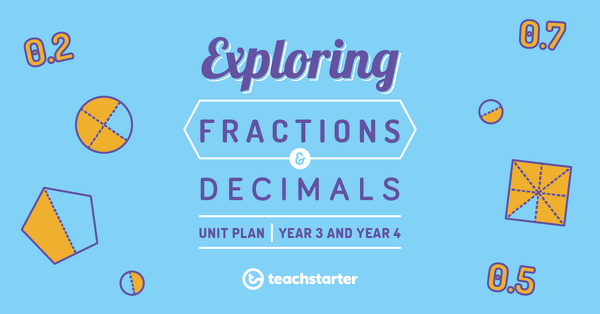Equivalent Fractions Teaching Resources
Everything you need for teaching equivalent fractions in your elementary math class has been brought together in one place by the Teach Starter team! Find printable equivalent fractions worksheets, math center activities, and more — all created by teachers for your elementary classroom!
Each curriculum-aligned teaching resource in this collection has been rigorously reviewed by our teacher team to ensure it meets standards, has been fact- and spell-checked, and is ready to be downloaded and used in your classroom.
New to this section of the math curriculum or just haven't taught students to work with fractions in a while? Take a peek at this quick primer from our teacher team!
What Is an Equivalent Fraction?
Equivalent fractions are different fractions that represent the same value. They have different numerators and denominators, but they are equal in value. For example, 1/2 and 2/4 are equivalent fractions because they both represent the same value, which is 0.5.
Equivalent fractions can be found by multiplying or dividing both the numerator and denominator by the same number.
How Do You Find Equivalent Fractions?
Looking for tips to teach students to find equivalent fractions? In addition to the various worksheets and activities in this collection, here are some tips from our math teachers!
- Multiply the numerator and denominator by the same number. For example, to find an equivalent fraction of 2/4, you can multiply both the numerator and denominator by 2 to get 4/8.
- Simplify the fraction by dividing the numerator and denominator by their greatest common factor so the fraction is in its most simplified form. This is also referred to as a fraction in the lowest terms.
- Use visual fraction models. To find an equivalent fraction by using visual representations, create a rectangular bar model for any given fraction. This is done by dividing the rectangle into the total number of pieces (the denominator) and shading the number of pieces represented by the numerator. Then "cut" each of these pieces into halves, thirds, fourths, etc. Determine your new numerator and denominator by counting the shaded pieces (numerator) and total parts (denominator).
In each case, you will get a fraction representing the same value but having a different numerator and denominator.
How Do Equivalent Fractions Help Kids?
Are your students asking why they have to learn this portion of your math curriculum? It can be handy to have more reasons on hand than the age-old "because."
There are immediate benefits to learning equivalent fractions as kids learn to simplify a fraction to make it easier to work with. Reducing a fraction to its lowest terms by dividing both the numerator and denominator by the same number can make it easier to compare fractions or calculate the sum, difference, product, or quotient.
You can also remind students that there are real-world applications! In cooking, for example, knowing how to handle these fractions will serve them well when using different-sized measuring cups. For example, if a recipe calls for a 1/2 cup of flour and you only have a 1/4 measuring cup, you would use two scoops of flour to create the same amount. Understanding equivalent fractions can also be useful when it comes to creating and interpreting graphs and charts.
